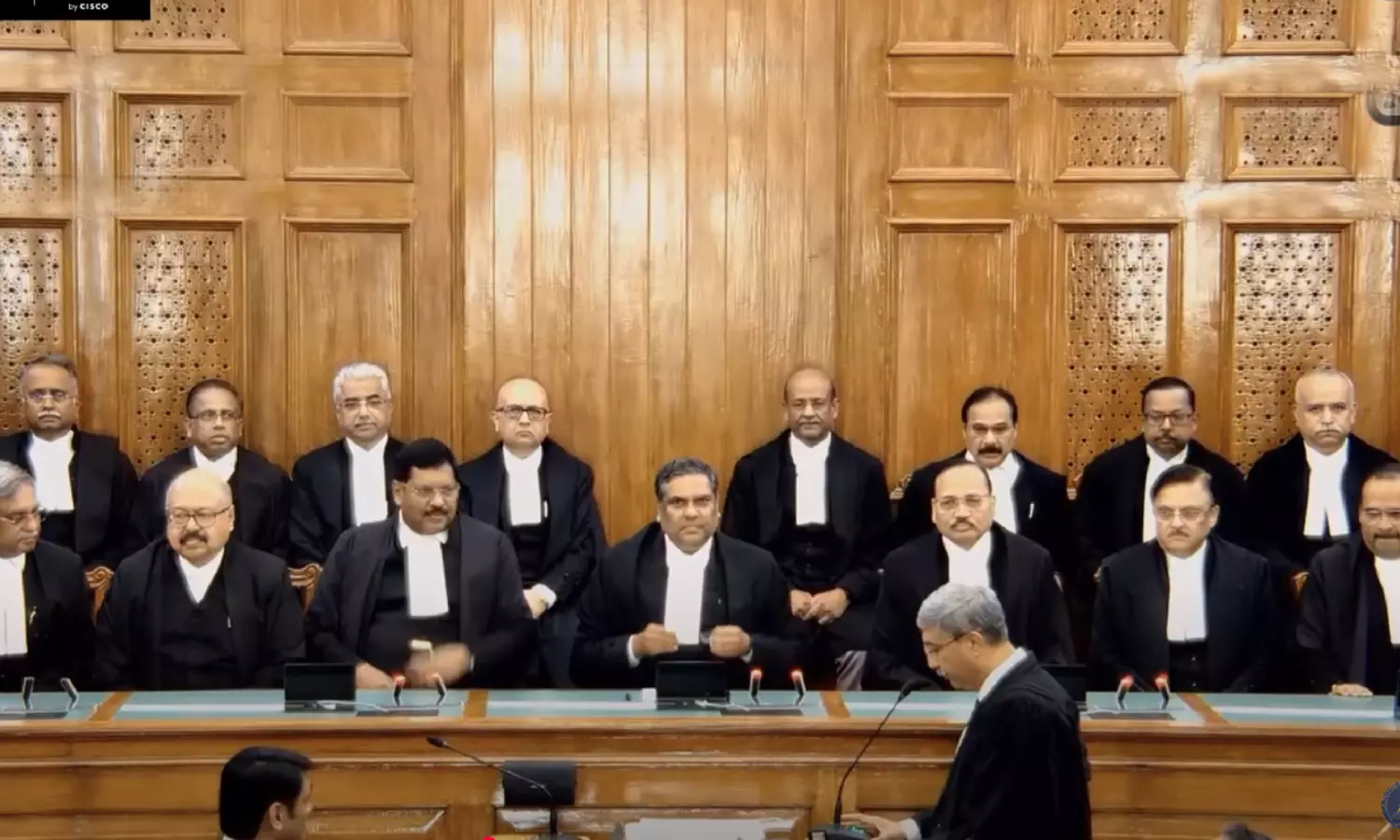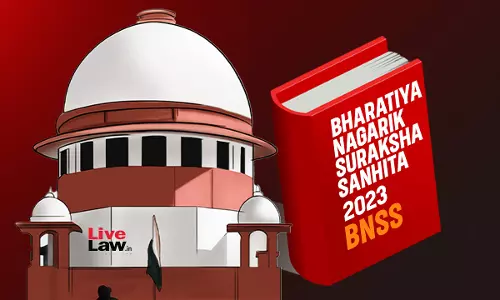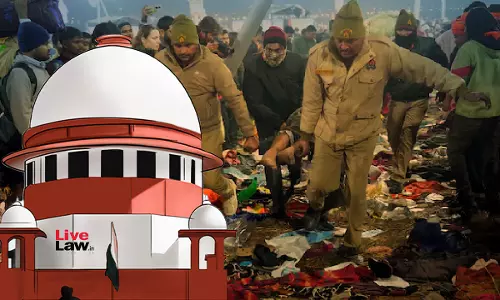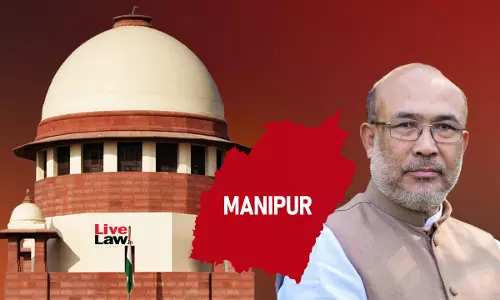Case Pendency, High Litigation Cost, Practice Of Falsehoods : CJI Sanjiv Khanna Flags Challenges Faced By Supreme Court

Chief Justice of India, Justice Sanjiv Khanna today (January 28) flagged case pendency, rising litigation costs and lack of integrity amongst lawyers as the three core challenges faced by the Supreme Court in the present times. The CJI addressed these challenges while speaking at the Ceremonial Bench organised to commemorate the closure of the Diamond Jubilee Year (75 years) of the Supreme...
Chief Justice of India, Justice Sanjiv Khanna today (January 28) flagged case pendency, rising litigation costs and lack of integrity amongst lawyers as the three core challenges faced by the Supreme Court in the present times.
The CJI addressed these challenges while speaking at the Ceremonial Bench organised to commemorate the closure of the Diamond Jubilee Year (75 years) of the Supreme Court of India. He opined :
"While the Court's journey reflects remarkable evolution in rights and reach; three challenges demand our attention: the 1st is the weight arrears which continue to delay justice; 2nd is the mounting costs of litigation which threaten accessibility; 3rd and most fundamental - Justice cannot thrive where falsehood is practised. These challenges mark the next frontier in our pursuit of Justice."
Lauding the values of accessibility and diversity upheld by the Apex Court in spirit and practise, the CJI said: "What sets the Supreme Court apart on the global stage is its unique character as a true people's Court"
"The court remains accessible to the common public and in its diversity - the judges in the courtroom, the multitude of voices find representation at the highest level at our judiciary" He added.
The Supreme Court Rising Through The Decades: CJI Walks Through The Evolution Of The Apex Court
In his speech, the CJI explained how the Supreme Court of the Country grew and evolved in its quest to uphold the Constitution and the confidence of the people of India.
"Each decade of our Court's jurisprudence serves as a mirror to our nation's challenges. Like rings in a mature tree that reflect its journey through different seasons, these judgments reflect not just legal evolution, but our country's very pulse. What emerges is not an unmoving structure carved from sandstone, but rather a living, breathing institution. It has been responsive to the conscience of our democracy, adapting and evolving to embrace the complexities of each era while remaining rooted in the bedrock of constitutional values."
The First Decade, which the CJI termed the 'Sunrise Years' focused on the task of transforming a newly independent nation into embodying the values, the ethos and the morality of our Constitution. He quoted Dr. B.R. Ambedkar's idea of constitutional morality :
“Constitutional morality has to be embodied in nation building, it has to be cultured in a nation like India where everything is newborn.”
In this decade, the two land decisions were Romesh Thapar v. State of Madras (on reasonable restrictions on right to freedom of speech and expression) and Daryao v State of Uttar Pradesh (right to life cannot be curtailed except as prescribed by the constitution).
The Second Decade was 1960s- the Years of Anchorage as well as Discovery. Here the Apex Court's sanctioned strength was increased to 14. The decade saw much discussion around the interpretation of 'law' under Article 13.
The CJI elaborated that here the Courts were tasked to interpret whether the expression “law” used in Article 13 included constitutional amendments. If it did, then whether the chapter on fundamental rights be rendered immune from amendment?
This subsequently led to the landmark decision in the Kesavananda Bharti Case, where the majority of the Supreme Court held parliamentary amendments cannot take away or abridge basic features of the Constitution.
The third phase was 1970s- 1980s -the 'Years of turbulence leading the way to social justice and equality jurisprudence'. This was the time when the concept of 'locus standi' of a party to approach was diluted in the form of 'Public Interest Litigation' and the Court opened doors for those marginalised sections who could not be represented before.
In this phase, several noteworthy decisions were delivered by the Supreme Court- (1) Mumbai Kamgar Sabha, Bombay Case where Justice Krishna Iyer reasoned that legal technicalities should not become “an added terror” for the underprivileged; (2) S.P. Gupta v. Union of India which held it necessary to democratize judicial remedies; (3) Hussainara Khatoon v. State of Bihar dealt with the plight of undertrials and need for speedy trials; (4) Sunil Batra v. Delhi Administration highlighted the rights of prisoners systematic issues in the administration of justice; (5) Indira Gandhi v. Raj Narain held judicial review and free and fair elections as fundamental features to the Constitution; (6) In Bandhua Mukti Morcha v Union of India, bonded labour was abolished as violative of Article 21 and (7) in Maneka Gandhi v. Union of India, the Apex Court held that article 14, 21 and 19 were not mutually exclusive but linked and the procedure affecting of these rights requires to be just, fair and reasonable.
The 1990s was seen as the 'Era of Consolidation and Expansion of Fundamental Rights'. The CJI detailed that in this phase, the Court "adopted an expansive interpretation of fundamental rights, reading them harmoniously with the directive principles for state policy."
The landmark decision of this decade included (1) Unni Krishnan v. State of Andhra Pradesh - where it was held that the Right to Education was part of the Right to Life under Article 21 and paved the way for Article 21A and the Right to Education Act in 2009; (2) Vishaka v. State of Rajasthan which resulted in comprehensive guidelines to prevent sexual harassment at work;
(3) Indra Sawhney v. Union of India, where the Court held that affirmative action is not an exception, but a tool for guaranteeing equality of opportunity and (4) S.R. Bommai v. Union of India which held that federalism and secularism were part of the basic structure of the constitution.
From the 2000s, the CJI expressed that the Supreme Court has been venturing further into expanding its constitutional role. This included several decisions uplifting the women's rights to work and equal participation, right to information, right to freedom of digital speech and also newer branches of law such as Arbitration and Insolvency and Bankruptcy Code.
Attorney General for India R Venkataramani; Solicitor General Tushar Mehta and President of the SCBA Kapil Sibal were also present at the event.




